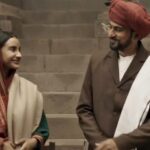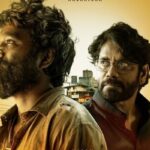Kamal Haasan A cinematic Journey is a biography of one of the most critically acclaimed actor of our times Written by critic and national award winning documentary film maker K Hariharan the book is recently published by Harpercollins Publishers.
The book Kamal Haasan a Cinematic Journey traces the journey of the actor from his childhood to his latest Indian 2 – analyses atleast 50 out of his 245 films. Even at a young age, he took on roles other actors would be wary of, positioning himself as an object of female desire in the 1980s; balancing both comedy and tragedy with aplomb; playing formerly caricatured roles such as that of a dwarf in Apoorva Sagodharargal and a woman in Chachi 420 with dignity; and having a resurgence in 2022 with the blockbuster Vikram.
This book is the best introduction possible to Kamal Haasan: his life, his thoughts and his movies.
Here’s an extract from the book that talks about he co-writing his first film with his friend RC Shakti, and the whole process of struggling to make it and how and why it is called the remake of a Malayalam film.

Befriending Shakti changed Kamal’s life. In him, Kamal found the perfect partner. Kamal had the emotional intelligence required to grasp the complexities of film language and Shakti had the managerial abilities to survive the brutal Tamil film industry. Whenever there was a break, Kamal would pour out to Shakti all the stories and ideas from the various films that he had seen or heard of. Thangappan would shout at Shakti for being inattentive, but he was also reconciled to the fact that only the latter knew the art of breaking down scenes and shots.
Shakti would encourage Kamal to perform some directorial duties, such as striking the clapboard and maintaining continuity routines. One day, there was a scene in which a rich landlord fulfils a devotee’s needs. When the actor who was supposed to play the landlord’s role did not turn up, Shakti suggested that Kamal play that role. The lean and hungry-looking Kamal was far removed from the portly image of a landlord, but at that moment, they had no choice. As expected, Kamal, despite his looks, excelled in the role of the landlord and in this way his first shot as an actor, however insignificant, was filmed. But when the first cut was ready and viewed by financier Sadayappa Chettiar, his reaction was, ‘Who is that guy playing the landlord? Have you all gone nuts? That one scene will kill the whole film. Throw it out or I am out.’ The landlord scene went into the dustbin and the journey started all over again for Shakti and Kamal.
When I asked him about it, Shakti recollected, ‘Walking the streets of Madras’s tinsel town and discussing film stories was an obsession for both of us. I certainly had more contacts among producers and financiers than Kamal, and he would egg me on to make all the proposals while I would urge him to put all his wonderful ideas into words. One night, we decided on a story and headed to catch the last bus at 11 p.m. to go back home. As we reached the main road, we saw the bus leaving! So we just parked ourselves on the steps of a teashop, hoping that another bus would come by. There was no bus, but the story went through several drafts over the next seven hours and with a big smile of achievement on our faces, we boarded the first bus at 6 the next morning to catch up with some sleep.’
The film was aptly titled Unarchigal, meaning ‘heartfelt expectations’. ‘We found a producer in the well-known Azhagappa Chettiar, who was willing to invest about Rs 5 lakh in the film, provided I could raise Rs 50,000 as seed money,’ Shakti continued. ‘With this budget, we could get a reasonably well-known cast of actors and technicians. Luckily, we also found an angel investor in Mr Kalayanasundaram, a typical landlord aspiring to become a producer, who invested the seed money. We rented an office space in the Venkateshwara Lodge near the newly opened Kodambakkam bridge in 1972.
As expected, aspiring assistants and actors started making a beeline to get their chance to star in our venture. Sharada Studios was booked and the opening date, with a somewhat famous actor, finalized.’ A day before shooting disaster struck We went to Mr Kalyanasundaram’s room to pick up some cash and to our shock, we found him crying away. His elder brother-in-law had come earlier that day and taken away all the money. He told us, “That money actually belongs to my mother-in-law who is living in a village. Suddenly she has changed her mind and sent my brother-in-law to bring it all back. Now I can’t show my face to anyone in my village. If the movie is not made, I am going to jump down that new bridge and kill myself on the railway tracks!”’
Recollecting this, Shakti started rolling in laughter. ‘Not only did we lose a film, but this idiot was threatening to kill himself. I could only imagine my career, and probably Kamal’s too, ending in a stinking jail. I had to come up with a solution. So I asked him how much cash he had on him. He said he had Rs 5,000! So with deep resolve I announced that I would start with this “princely sum” as per the plan and Kamal would play the main role! Almost everyone, including Kamal, jumped up in shock. How could a writer play the main role? But everyone knew I had a bad temper and they all decided to follow the leader.
 Sharada Studios was dropped, and I told a shocked Kamal that the film would now be shot in his house at Alwarpet. Kamal was flummoxed and with great hesitation asked his mother for permission. She thought we were all crazy but finally let us shoot. My cameraman said he would need plenty of light. So we shifted a lot of scenes to the terrace and managed to do the indoor scenes with a few extra lights. ‘On the very first day, around lunchtime, we saw three cops coming in. They asked us to pack up and report to the police station. We had no clue what crime we had committed. But I did see the electrician run away from the spot. The cops informed us that we had actually tapped the electrical mainline directly, which was a crime. I had no clue about this and the main culprit had fled. That’s when one of my friends from the stunt artistes’ union took the cops into a separate room and threatened them that he would kill himself if this already screwed-up shoot was going to be stopped. Now we were faced with one more death threat, as if we had not had enough.
Sharada Studios was dropped, and I told a shocked Kamal that the film would now be shot in his house at Alwarpet. Kamal was flummoxed and with great hesitation asked his mother for permission. She thought we were all crazy but finally let us shoot. My cameraman said he would need plenty of light. So we shifted a lot of scenes to the terrace and managed to do the indoor scenes with a few extra lights. ‘On the very first day, around lunchtime, we saw three cops coming in. They asked us to pack up and report to the police station. We had no clue what crime we had committed. But I did see the electrician run away from the spot. The cops informed us that we had actually tapped the electrical mainline directly, which was a crime. I had no clue about this and the main culprit had fled. That’s when one of my friends from the stunt artistes’ union took the cops into a separate room and threatened them that he would kill himself if this already screwed-up shoot was going to be stopped. Now we were faced with one more death threat, as if we had not had enough.
Seeing our desperation, the cops relented and walked away after eating our frugal meal and giving us a small warning. ‘Despite this small respite, our shooting again stopped after five days when we ran out of money. Kamal was heartbroken, but news of his acting skills spread like wildfire and K. Balachander offered him a good role in another aptly titled film, Arangetram (1973), meaning “the opening performance”. That brought him more offers and before long, he got 15 calls from Malayalam producers who felt that Kamal’s acting style was eminently suitable for their realistic films.’
Meanwhile, Shakti kept looking for financiers. And then one day, after four months, Kamal came to him and said that a Malayali producer wanted to buy the story rights for Unarchigal. Shakti was shocked and amazed at the same time. The money was attractive, so Shakti relented and before long the Malayalam version of the film called Rasaleela (1975) was completed and released. A few months later Shakti managed raise some money and the ‘original’ Tamil film was completed and released in 1976. Unfortunately, the reviewers who watched Unarchigal on the opening day praised the film as an excellent copy of the Malayalam original.
















